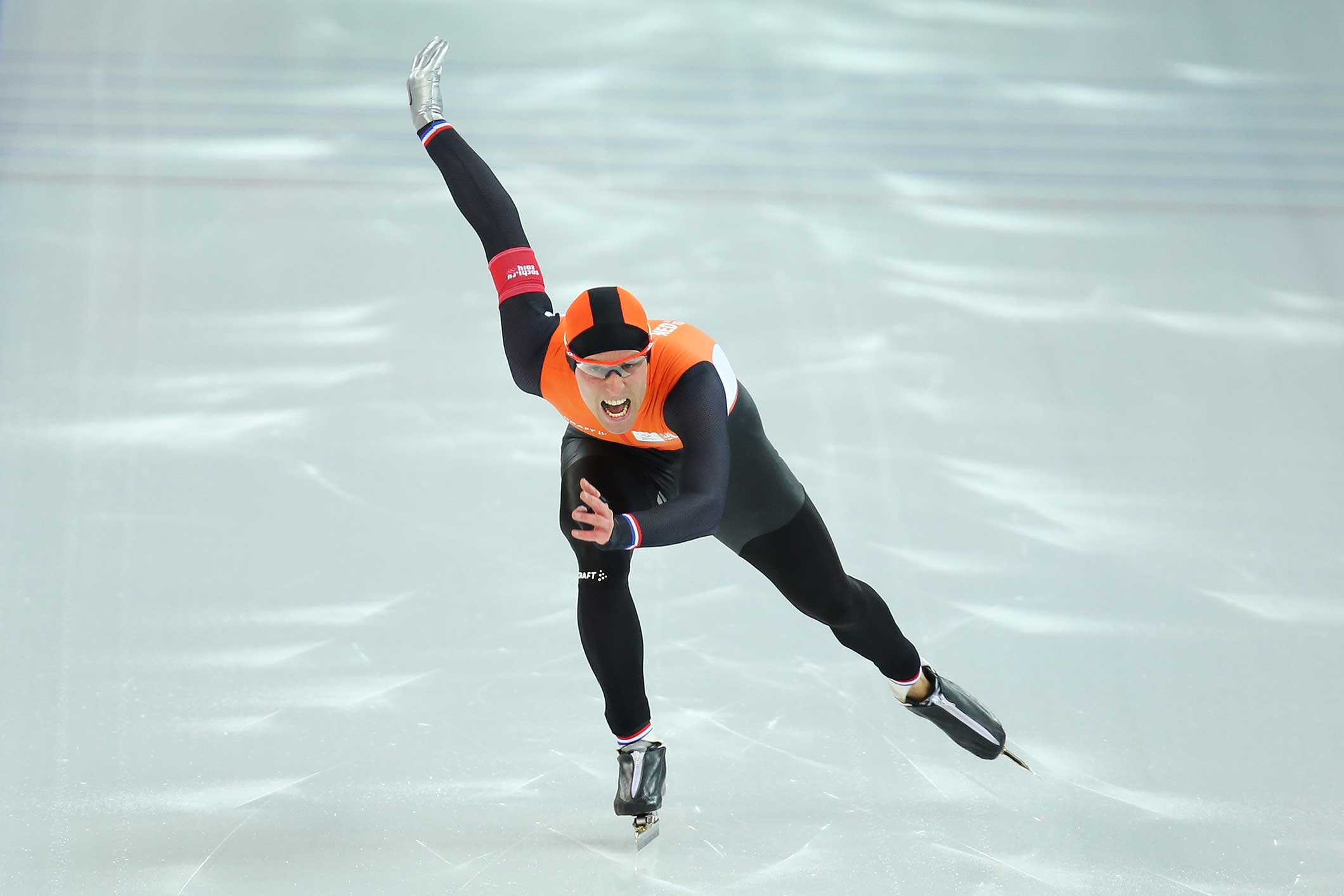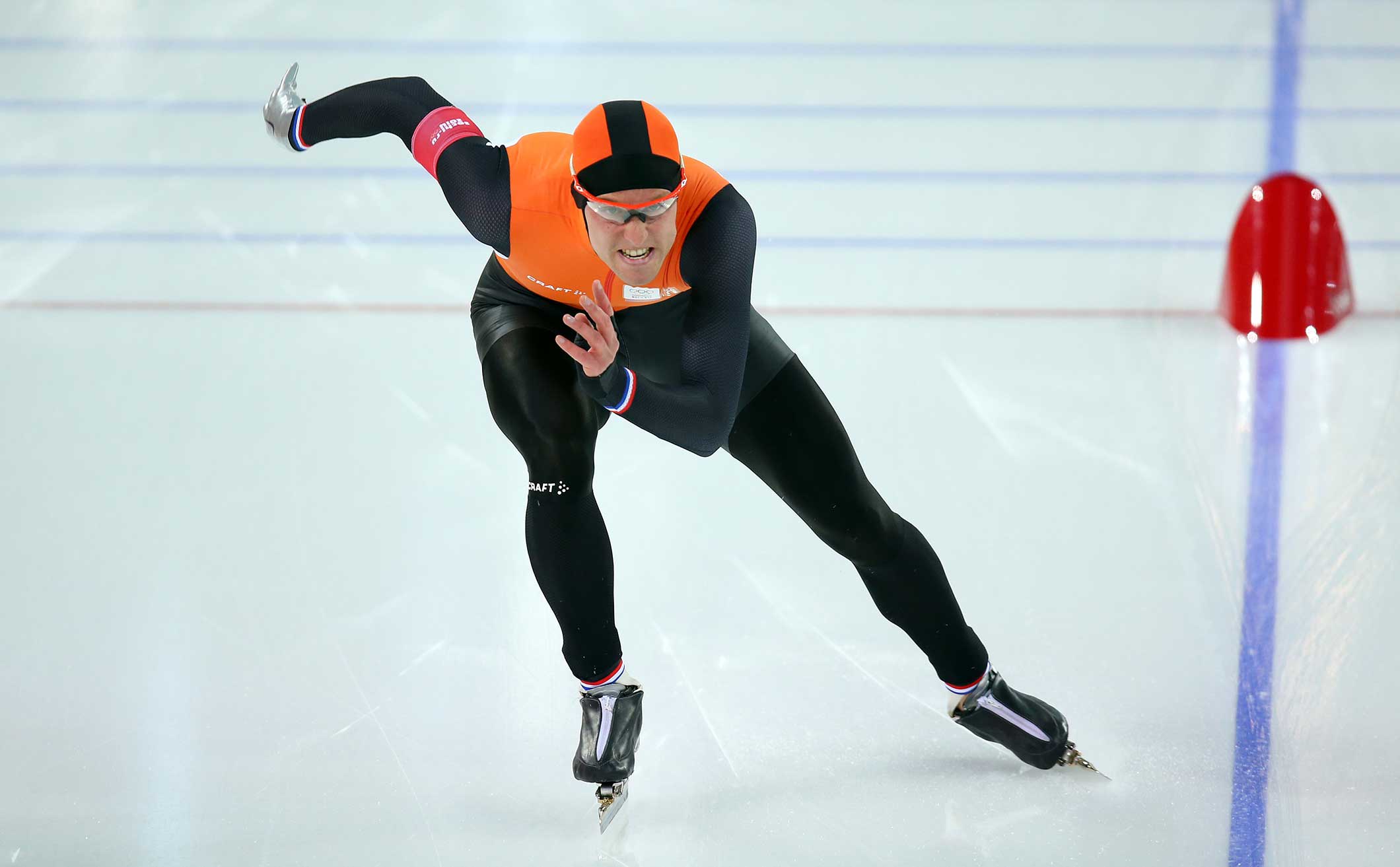Ronald Mulder’s Guide to Speed Skating at PyeongChang 2018
Simple, straightforward and utterly absorbing, speed skating is one of the most accessible of all Olympic Winter Games sports. “Pure sport is about being the fastest and that is what speed skating is,” Ronald Mulder, the Netherlands’ 2018 500m European champion, said.
“My first thing to think about is going as fast as possible and that’s it for the rest of the race,” added Mulder, who claimed bronze in the 500m at the Olympic Games Sochi 2014. “What I love most is the speed you have going into the corners – you are going 60km per hour and flying. In the sprints (at PyeongChang 2018) I reckon 20 people could win the gold. It’s going to be really tight, really exciting. One-hundredth of a second can change a lot.”
Ronald’s twin brother, Michel Mulder, beat compatriot Jan Smeekens by exactly that margin after two runs to win the 500m gold in Sochi four years ago.
The Lowdown
Speed skaters race around a 400m oval track in pairs, one taking the outside lane and one the inside. They swap positions at the end of each lap because the inner lane of the speed skating oval covers a shorter distance than the outer lane (although there is no changing of lanes on the first straight of the 1000m and the 1500m). Ten of the 14 speed skating events in PyeongChang are a race against the clock, with competitors ranked on time alone.
The men line-up in the individual 500m, 1000m, 1500m, 5,000m and 10,000m, with the ladies contesting the 500m, 1000m, 1500m, 3,000m and 5,000m.
There are two events in speed skating which differ from the norm: the team pursuit and the newly-introduced mass start. Two teams of three athletes compete in the team pursuit, with rankings decided on the time that the third skater in each team crosses the finish line.

The Mass Start
“It’s a big change,” Mulder said of the new event which features a maximum of 24 skaters lining up together on an open track (no inside or outside lanes) and racing head-to-head for 16 laps. During the race there are three intermediate sprints, with the skaters placed first, second and third in each receiving 5-3-1 points respectively. There is also a final sprint, and the first three skaters to cross the finish line get 60-40-20 points.
“For me, speed skating is against the clock but the mass start is a fun event,” Mulder said. “The excitement is good for the crowd, it’s good to watch, everyone is fighting for their spots, getting in a good position before a sprint. It’s a different element. It’s not just the fastest guy wins.”
Key Skills & Top Tips
First of all you have to master going from standing on the ice to full speed. According to Mulder, there is no real secret to it.
“You stand still, the starter shoots and you have to go as fast as possible, it’s not that hard, you just have to do it right,” he laughed.

Once up and skating, it is the cornering that determines the medallists from the rest.
“If you are going 60km per hour into a corner you have to do it well,” he explained. “Everyone can corner, not everyone can corner well. It’s about being compact, holding your shape. Your body wants to go to the outside but you have to make it go left. It’s hard to explain without being really technical but you’ve just got to be low and keep your body in a good form.”
In Mulder’s main event, the 500m, it is simply all or nothing.
“There is no place you can relax or put a little less effort in. There is no centimetre in that race you can do anything but go as fast as possible,” he said. “It’s really important you get to your top speed as fast as possible and stay there. In the 10,000 you can race your opponent but there is no chance for that in the 500m.”
Naturally, as a sprinter Mulder has no desire to race the 25 laps required in the 10,000m – “I am not the person for that, I can’t do it. My muscles won’t let me.”
Interestingly, for a sport in which milliseconds are often critical, the skates the world’s best use vary very little from those available at any public ice rink. The suits, however, are a different matter.

“They are not really comfortable but they help you get in position and it’s more aerodynamic, obviously,” he smiled. “They keep changing the material and every country has slightly different suits. Right now they seem to be saying if you have a blue suit it’s faster, I don’t know why but it’s OK: our suits are mostly blue for the Games.”